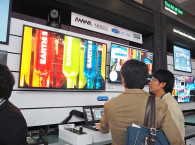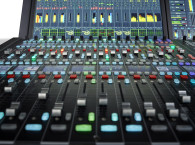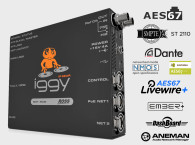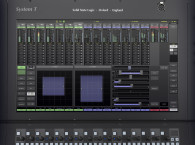The IBC show is always an important event to remind us of some key perspectives having to do with audio technology, content production, and distribution, which are at the core of our interests. Just like music is now predominantly available on streaming services, radio and television content are now being distributed over the Internet, while movies and lots of other content is available directly to all of us in multiple platforms and services. All this is reflected at a show such as IBC, providing a much more diverse perspective than what is currently possible at the other comparable event which is the National Association of Broadcasters (NAB) convention in Las Vegas, NV.
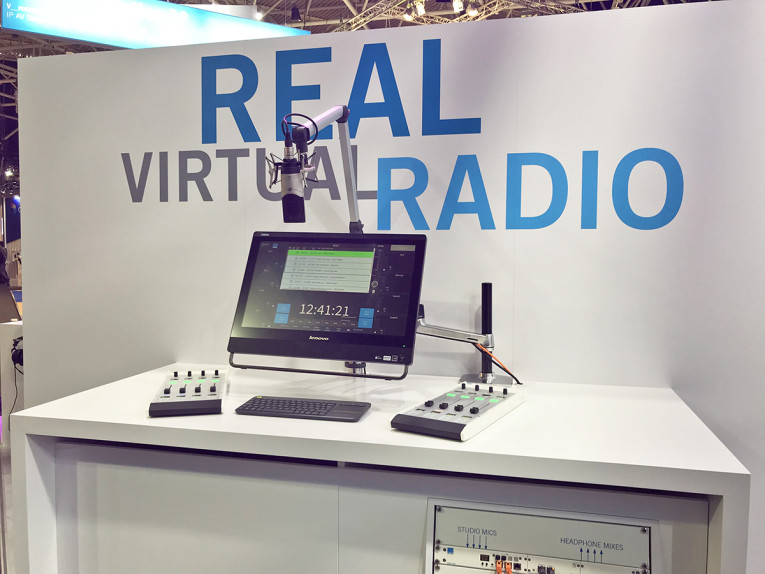
The 2018 edition of this highly influential media, entertainment, and technology show was highly inspiring, growing in scope, reach, and diversity, as the promoters reported. It's always important to remember that this IBC show was originally the International Broadcasting Convention, and quickly evolved from its technical broadcast roots to encompass the breadth of media creation management and delivery, from online content to digital cinema. The 2018 edition attracted more than 55,000 attendees (55,884 to be precise) from 170 countries around the world, with more than 1,700 exhibitors. Run by the industry for the industry, IBC is supported by six leading international bodies, which are event's owners, representing both exhibitors and visitors: the IABM; Europe's largest professional body of engineers, the IET; IEEE Broadcast Technology Society; The Royal Television Society (RTS); The Society of Cable Telecommunication Engineers (SCTE); and the Society of Motion Picture and Television Engineers (SMPTE).
For any audio professional, there are many reasons not to miss IBC every September, but getting the scope of the radio industry, and meeting many key technology vendors, including most manufacturers of broadcast equipment, from transmitters to microphones is always our focus.
As well as providing a host of new initiatives this year, the exhibition grew even more, and conference delegates were up by 14% year on year (conferences ran from September 12-17, while exhibits where open from September 13-17.) Among the many themed sessions and exhibit areas, I would highlight the Future Zone, which this year was one the best ever, with presentations from researchers and academic bodies developing the ideas that may become the hit products five years from now. From spatial and immersive audio to the future of television in 8K, 4K HDR, and High Frame Rates, and artificial intelligence powering voice transcription and content verification, it was a fascinating voyage.
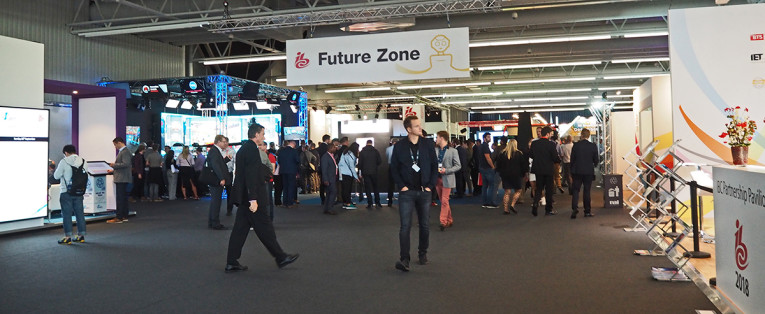
But even within the 15 halls that make the IBC show floor, it was possible to get valuable insights about key technology trends that are changing the industry. We are witnessing dramatic improvements on image quality, not so much because of the increase in resolution (up to 8K now), but also much brighter displays, reflecting the possibilities of high-dynamic-range (HDR) capture and high frame rates (HFR), and even 360-degree cameras. We can also learn about how content producers and distribution platforms are using Artificial Intelligence (AI) to process massive quantities of metadata in the cloud, some of which generated with image analysis and audio recognition algorithms, to create new media asset management (MAM) tools that are used not only by the media organizations themselves but are even available to consumers on streaming services.
And with consumers being able to access content in multiple platforms over the Internet, the appetite for new-generation Ultra-High-Definition displays is growing and no longer dependent upon traditional television services. So even the broadcasters have to adapt, making sure they are able to independently upgrade their content production, if they actually broadcast in those formats. And IBC also provided a unique insight on the transition to fully IP (Internet Protocol) networked operations, with the SMPTE ST 2110 suite of standards (with all the compatible audio protocols embedded - AES67, Dante, Ravenna, etc.) quickly replacing the current video and audio serial digital interfaces. And all this, while media organizations and content producers are still learning how to cope with file-based systems and implementing new-generation distributed systems that support exciting possibilities such as remote production. Of course, immersive and object-based audio are right at the center of those workflows. And we could go on...
But overall, my focus for the show this year was to identify the trends on new media business models and the technology that will power those operations. A key example of how things are changing is that we are seeing companies such as Netflix publishing its own production guidelines. During IBC, Netflix announced the creation of a "Netflix Post Technology Alliance," which includes key technology vendors in areas such as cameras, creative editorial, color grading, and media packaging. And as they say, "this is just a start."

As I was working on this piece, I received an interesting presentation summary from FFalcon Technology and Statista Research and Analytics (the two companies had a joint presentation at IBC 2018), which clearly reflects the changing landscape of media. The two companies published a whitepaper titled "The Revenue and Business Opportunities for the Smart TV Ecosystem", which details how the TV market is changing and how smart TVs will be a key component for smart homes.
In this space, we often discuss smart speakers and smart home technologies and how those increasingly integrate the audio experiences in the home, with wireless streaming, multi-room installations and, of course, voice interfaces. Not surprisingly, the same companies that power those solutions could be found in Amsterdam, demonstrating how voice integrates with those new generation displays in the home, and how the confusing remote control will soon be replaced by voice interactions and tactile remote-control apps.
As Statista details, with global smart TV shipments set to reach a total sales value of $250 million by 2023, and the number of smart TV users estimated to be $762 million by 2020, the smart TV ecosystem has more than doubled in the past five years. But smart TVs will change as well. With viewers increasingly accessing content directly on the Internet and OTT services, the television interface will change, and the devices will evolve from a cumbersome navigation with a pointer or arrows on the remote to a more "smartphone-like" experience. And with devices connected wirelessly, signal sources will be able to expand from the traditional set-top box (or antenna) to a seamless integration within the home - and content being fed by mobile devices, streaming media players, and connected appliances. But the user will not need to switch AV inputs and manage volume, etc. It will all need to be seamless, and accessible by voice, for those who use VPAs.
As FFalcon Technology CEO, Tony Guo, highlighted in his presentation," due to saturation in the TV market, the connected home is the next revenue opportunity, thanks to artificial intelligence (AI) and the Internet of Things (IoT) offering new monetization potential via their integration on all smart TVs and other devices." Since people can consume content at any time, the "business value behind the smart TV market of the future will be the integration of more content providers," he noted as, "by 2020, OTT video services will generate $30.64 billion and the market size of mobile payment will reach $2,000 billion."
Even if North America is still lagging behind in Internet-connected TVs, compared to Asia and Europe, the usage of connected devices in North America (39%) exceeds those in China and Europe (both 29%), added Statista. The vast majority of people in the US using smart TVs, streaming media players, smart speakers, and the Internet tend to be between 30 and 49 years old - so there is still a big market to be accessed.
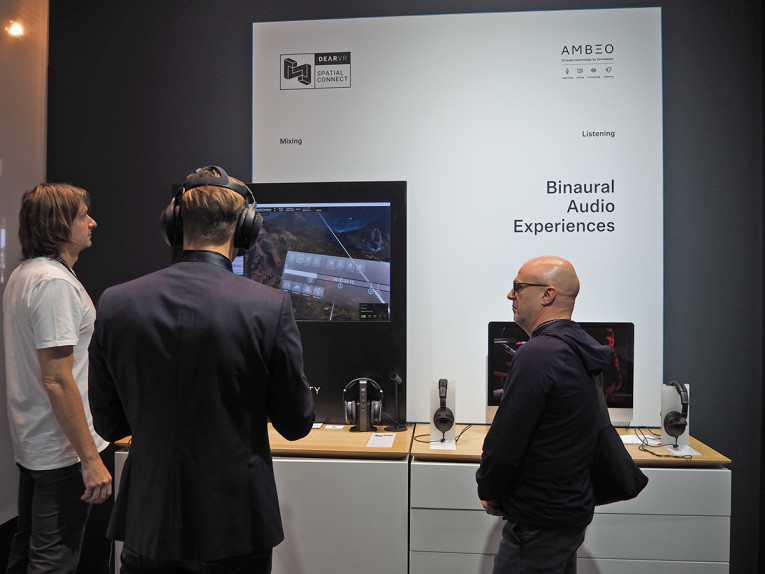
And while Statista's research reveals that viewing TV and other content on the smartphone is growing in the US and China, "overall, audiences spend more time watching linear TV than any other source, so linear TV is not dead yet and nor will it be for the foreseeable future." As it was clear at IBC 2018, the traditional television operators are increasingly betting on live content, from sports to entertainment, to reinforce their position, as do the news channels. The problem seems to be that everyone intends to go "direct-to-consumer" meaning that sports teams, artists, and even brands, want to be able to distribute their content to any platform, not just TV stations. How this will play in a fragmented multiplatform world is yet to be understood, since the Netflix business model and platform is not something that can be easily emulated. As the FFalcon Technology whitepaper highlights, success will depend upon "partnerships and development to offer a unified User Interface." Other keys to success include "supporting integration of digital consumer devices to improve users' experiences, and apps that enhance the true value of the TV."
This changing media landscape is also bringing huge opportunities to rethink many of the things that the industry is accustomed to see slowly changing (e.g., broadcast and production standards). If Amazon is increasingly a source for all media cloud services and determines many of the technology choices in distribution of media, and Netflix can rewrite its own "production guidebook," so will all the other players. And they all want improvements in many areas, from the choice of more efficient codecs, to loudness management and higher quality experiences (e.g., 4K/HDR and immersive audio) to lure the audiences. These will still rely in great part in the efforts of the industry standard bodies and research institutions, but adoption will be much faster, and we will see many more "de facto" standards in place.
The new business of Content Distribution Networks (CDN) and Network Service Providers (NSP) makes it possible to leverage innovations much quicker. What was previously dependent on satellite, cable, and telecom companies is now evolving to new players, which are the backbone of content distribution globally, and increasingly reaching the end consumer. Those new players will be key to supporting technologies (e.g., voice recognition and AI-powered personal assistants) and will determine the end-user experience in key areas.

One of those key aspects of the viewer experience has to do with spatial audio technologies, an area where the dominant player which is Dolby is now confronted with new standards-based MPEG-H, far reaching in scope, from loudness management to content interaction and, of course, the support of immersive audio in any device. MPEG-H is being developed and implemented by the Fraunhofer IIS with the support of powerful players such as Qualcomm and all the main consumer electronics and semiconductor companies.
At IBC 2018, Fraunhofer IIS and Vewd, a global "smart TV OTT software provider," have showcased a Hybrid Broadcast Broadband TV (HbbTV) demo that included streaming on a set-top box with MPEG-H Audio support, as defined in the latest HbbTV 2.0.2 specification. Vewd is the first OTT software provider to enable support for MPEG-H Audio in its HbbTV browser SDK, which now allows broadcasters to explore the advanced features of MPEG-H Audio in their HbbTV applications. Together with Fraunhofer IIS, the Oslo-based company implemented the first HbbTV application enabling the interactivity and personalization features of MPEG-H Audio. At the Amsterdam show, we could see and hear a demonstration using the well-discussed immersive soundbar prototype with both music and sports content, highlighting the features of MPEG-H, allowing users to select different versions of the content such as "default mix" or "dialog enhancement," as well as choose between various available language commentary (e.g., English, German, French, Italian, Portuguese) and audio description in multiple languages.

MPEG-H Audio is now part of the ATSC 3.0 and DVB TV standards. In South Korea, terrestrial ATSC 3.0 broadcasting with MPEG-H Audio is already on air, making MPEG-H the world's first commercialized next-generation TV-audio technology. Professional broadcast equipment, including encoders and monitoring solutions, as well as decoders and consumer products such as TV sets and soundbars, have been announced and introduced with MPEG-H support.
At IBC 2018, the Fraunhofer Institute for Digital Media Technology IDMT and the German audio metering and monitoring specialist RTW, presented a new speech intelligibility technology in film and TV dialogues, which we learned could easily be implemented in MPEG-H. See also the story on this trial with the EBU-Eurovision. Exciting times!
For more stories and articles on IBC 2018 click here.




